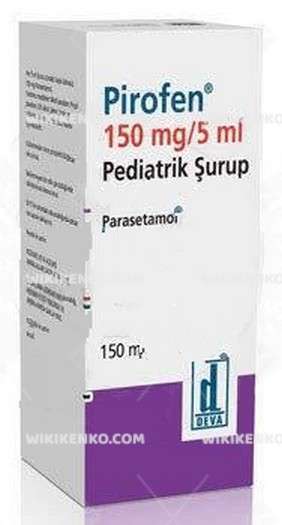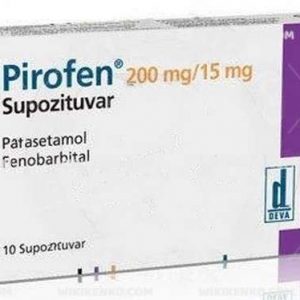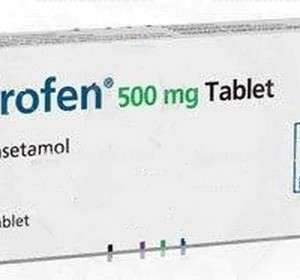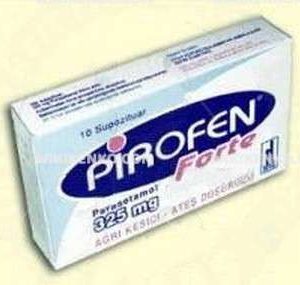Description
Forms and Uses
Pirofen Pediatrik Syrup doesn’t just limit itself to a singular form. It offers a spectrum of options, including syrup, regular tablets, effervescent tablets, injections, suppositories, and more. This diversity extends its utility to a wide range of patients and medical scenarios.
An Analgesic and Antipyretic Ally
1. Pain Management: This medication stands as an analgesic stalwart, used either independently or in conjunction with opioids to alleviate pain. Whether it’s mild discomfort or moderate agony, Pirofen Pediatrik Syrup has a role to play.
2. Fever Reduction: The antipyretic effects of this medication come to the fore when fever needs to be tamed. It’s a trusted companion in combating elevated body temperatures.
Dosage and Administration
The world of Pirofen Pediatrik Syrup can appear bewildering with its array of formulas, strengths, and dosage instructions tailored for children of varying ages. In an effort to steer clear of the potential perils associated with overdose and liver failure, adherence to the latest national and manufacturer dosage guidelines is of paramount importance.
Mechanism of Action
Extensive research has unearthed the dual facets of paracetamol, the star component of this medication. It boasts both antipyretic and analgesic attributes, making it a potent weapon against pain and fever. However, it’s essential to note that unlike salicylate drugs, paracetamol doesn’t disturb uric acid tubular secretion and doesn’t perturb acid-base equilibrium when taken in recommended doses.
Pirofen Pediatrik Syrup Side Effects
Every pharmaceutical entity brings a cohort of potential side effects, and Pirofen Pediatrik Syrup is no exception. The common side effects include nausea, stomach pain, loss of appetite, itching, rash, headache, dark urine, clay-colored stools, and jaundice. An allergic reaction, albeit rare, can manifest as hives, breathing difficulties, or facial, lip, tongue, or throat swelling. In such cases, immediate medical assistance is mandatory.
Precaution
Precaution is the sentinel that guards against pitfalls. When venturing into the world of Pirofen Pediatrik Syrup, it’s crucial to heed the following:
Dosage Diligence
The dosage intricacies can be bewildering, primarily due to the myriad formulations and strengths tailored for children of varying ages. The specter of fatal overdose and liver failure necessitates unwavering adherence to the most current national and manufacturer dosage instructions.
Allergic Anticipation
Allergic reactions, though rare, are a possibility. Keep a vigilant eye for telltale signs like hives, breathing difficulties, or swelling of the face, lips, tongue, or throat. If any such symptoms arise, cease medication and contact a healthcare provider immediately.
Overdose Awareness
An overdose of paracetamol can have dire consequences. Early signs include loss of appetite, nausea, vomiting, stomach pain, sweating, and confusion. Advanced symptoms encompass upper stomach pain, dark urine, and skin or eye whites turning yellow.
Interactions Intuition
Certain drug interactions can be unfavorable, especially for diabetic or hypertensive patients. Being informed about potential contraindications and interactions can avert serious repercussions. Consult with a healthcare provider to navigate these intricacies.
Onset of Action
Pirofen Pediatrik Syrup, driven by paracetamol’s potency, typically swings into action within 30 to 45 minutes post-administration. This means that relief from pain and fever is expedited, ensuring quick respite. However, individual factors like metabolism, age, and overall health can influence this timeframe.
Compatibility
While Pirofen Pediatrik Syrup can harmonize with various drugs, caution is advised. To ensure a harmonious pharmacological symphony, consider these general guidelines:
- Avoid concomitant use of drugs that share an active ingredient to preempt side effects or overdoses.
- Exercise vigilance when combining blood-thinning medications with nonsteroidal anti-inflammatory drugs (NSAIDs) as it heightens the risk of dangerous bleeding.
- Beware that specific combinations can slow your reactions, rendering activities like driving or operating heavy machinery potentially hazardous.
However, as drug interactions are intricate and specific to the medications in question, it’s prudent to seek counsel from a healthcare provider before introducing any new medication.
The Tapestry of Pregnancy and Breastfeeding
The safety of Pirofen Pediatrik Syrup during pregnancy hinges on a constellation of factors, including the stage of pregnancy and individual health circumstances. General principles encompass the following:
- Not all medicines are benign during pregnancy, with some posing threats such as birth defects, pregnancy loss, prematurity, infant mortality, or developmental anomalies.
- Prior consultation with a healthcare provider is imperative for pregnant individuals requiring medication.
- Abrupt discontinuation of prescribed medications is inadvisable, and the potential benefits often outweigh the risks.
Similarly, during breastfeeding, Pirofen Pediatrik Syrup, with paracetamol as its cornerstone, is generally deemed safe. However, vigilance is vital, as nearly every drug in the bloodstream can find its way into breast milk to some degree. While most drugs do so at levels unlikely to jeopardize infants, exceptions exist. Thus, a healthcare provider’s counsel is indispensable when considering new medications during breastfeeding.
In Conclusion
Pirofen Pediatrik Syrup, synonymous with pain relief and fever reduction, emerges as a versatile pharmaceutical tool. As with any medicinal venture, the prudent path involves seeking the guidance of healthcare providers. By adhering to recommended dosages, vigilantly noting allergic reactions, understanding overdose indicators, and recognizing potential drug interactions, one can harness the therapeutic benefits of this medication while navigating the intricacies of pregnancy and breastfeeding.
Pirofen Pediatrik Syrup, with its potent paracetamol core, stands as a stalwart in the arsenal against pain and fever, a guardian to be wielded with care and sagacity.
Table: Key Aspects of Pirofen Pediatrik Syrup
| Attribute | Description |
|---|---|
| Active Ingredient | Paracetamol (commonly known as Tylenol) |
| Available Forms | Syrup, regular tablets, effervescent tablets, injection, suppository, and more |
| Uses | Pain management and fever reduction |
| Dosage Strength | Varied, depending on age and formulation |
| Precautions | Overdose risks, allergic reactions, and drug interactions |
| Onset of Action | Typically within 30 to 45 minutes |
| Compatibility with Pregnancy | Generally considered safe with healthcare provider consultation |
| Compatibility with Breastfeeding | Generally considered safe with healthcare provider consultation |














Reviews
There are no reviews yet.